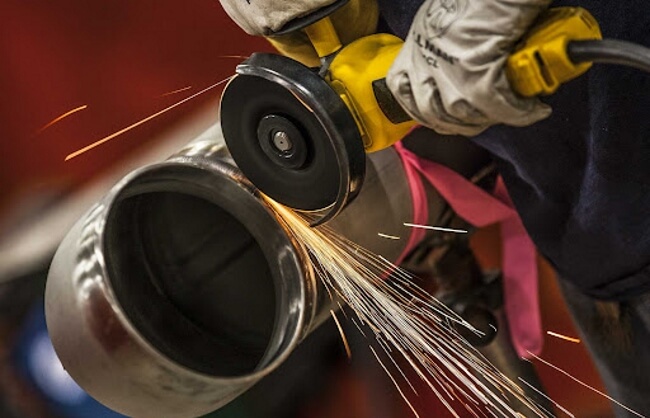

When you think about welding in the rain, you probably assume that it’s not a good idea. This assumption is usually correct. In the majority of situations, welding in wet conditions is not something that you should take on. If you can, you should delay the job until a later date. This isn’t possible for everyone, though, and welding isn’t always something you can put off. Emergency repairs might need you to weld there and then, regardless of whether it is raining or not. OSHA standards don’t actually make it illegal to do so. However, there are so many different things to consider when it is time to weld and it is raining outside.
You can take many different precautions, and this is not something to take lightly, you can end up doing yourself serious damage if you go out there without the right type of protection. Whether it’s attracting lightning during a thunderstorm or increasing your chances of getting a nasty electric shock, you can find that you are in serious danger.

What you do need is to take strong precautions and ensure that you’ve got the right equipment. OSHA standards also recommend that you only weld in wet conditions when it’s really necessary. The risk to your life is not worth taking if you can avoid it.
There are loads of risks associated with welding if you do not do it with enough caution and use the right safety gear. The electrical current that is running through these welders is probably not going to kill you if you do get shocked, but nobody can say this for sure. On top of this, it is likely to cause you serious pain or even long-term injury.
You need all the equipment you would normally use…and more. Whether you are using a simple 120V welder for home use or an industrial model, you need to make sure it is up to the job, with the appropriate grounding so that it doesn’t cause you a shock. Protective equipment and clothing is a must. The best gloves are essential to make sure that your hands are protected and don’t come into contact with electrical currents, but if they do you still need to make sure you have some protection. Good gloves alone won’t protect you.
There are a number of different types of welding. Different welders do things differently. A TIG welder like this model from LOTOS is great for power efficiency, and usually for safety, but there still aren’t any specific types of welding that are 100% safe in the rain.
MIG welding involves Metal Inert Gas that uses a feed wire to move a spark through the welding gun. It’s not a good idea to do this sort of welding in the rain if you can avoid it. If you have no choice then you can take some precautions. Mig welding is sometimes referred to as GMAW Trusted Source Gas metal arc welding - Wikipedia Gas metal arc welding (GMAW), sometimes referred to by its subtypes metal inert gas (MIG) and metal active gas (MAG) is a welding process in which an electric arc forms between a consumable MIG wire electrode and the workpiece metal(s), which heats the workpiece metal(s), causing them to fuse (melt and join). en.wikipedia.org welding. The creation of the spark by the gun, combined with the fact that these models of welder have quite high electric currents running through them, means that they can be a difficult product to use in the rain, and the precautions you need to take are even more severe for this type of welder.
TIG welding uses long rods of tungsten inert gas which fuses the metal pieces together. Though it doesn’t have the same spark, the same recommendation applies. Don’t weld using this method in the rain if you can possibly avoid it. TIG welding creates quality joins on aluminum as well as a variety of other metals.

An oxyacetylene welder doesn’t use electricity. Instead, it uses oxygen and gas to create a high temperature that you can then use to meld pieces of metal together.
There are lots of hazards that go along with oxy welding, of course, but that doesn’t mean that it isn’t the best choice for welding in the rain.
Arc welding involves a lot of skill. It is a way to heat metal to extreme temperatures and in doing so create a simple method to join two pieces of metal together. It’s more of a specialist type of welding and requires a lot of skill. Some of the top aluminum welders on the market are great for use as arc welders. The metals melt together and you can create a join. When it cools to a lower temperature then these metals will be set in their new position.
Like most other types of welding, doing this in the rain is not something that we would advise you to do if you can avoid it, but it isn’t 100% forbidden by OSHA guidelines.
There are many people who incorrectly assume that there are regulations against welding when it is wet out. Having read through this guide, it will come as no surprise to you that welding in the rain is not something we recommend, but it is not expressly forbidden anywhere.
This means that welding can continue in the rain, but there is no point in taking excessive risks.
For a start, make sure you don’t weld in a thunderstorm as this can cause much higher chances of injury. Switch to DC power, and make sure you take a number of precautions with what you are wearing to greatly reduce the risks of getting electrocuted. All of this while still taking the precautions needed so that you don’t burn yourself. Welding in wet conditions doesn’t have to spell catastrophe if you take the right precautions.





